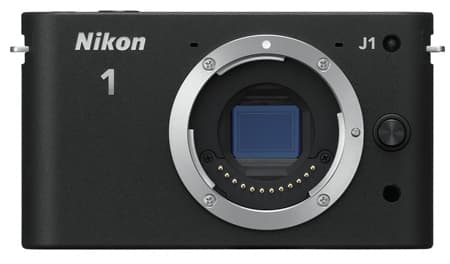Page One: Nikon 1 processor ‘more powerful’ than DSLRs
The Nikon 1 system is about its high-frame-rate features, such as Smart Shot and Motion Snapshot, not its sensor size or pixel count, according to Yoshizo Mori, general manager of Nikon?s development department.
In an exclusive interview with Amateur Photographer (AP) he also explained that the size of the lenses had to take priority over the physical dimensions of the imaging sensor.
While other compact systems have managed to make small camera bodies, he said, none have managed to create a truly small system that includes small zoom lenses.
The Nikon 1 system was designed with functionality, size, speed and its feature set as a first priority rather than the traditional concerns of the size of the sensor and the number of pixels on it.
Mori is confident though that even with 10 million pixels the Nikon 1 will produce excellent image quality. ?We have used a processor more powerful than those we use in our professional DSLR cameras, and the sensor we are using has large pixels; 3.4 microns.
‘We have developed a new gapless micro lens system that improves light-gathering efficiency and we are good at controlling noise in our DSLRs,? he explained.
The reasons for using the smaller 13.2×8.8mm sensor are not just about being able to create a small 10-100mm movie lens, but also about being able to read off image data quickly.
?The smaller sensor is able to read-out very quickly without generating much noise, without over-heating during extended bursts and without using much battery power,? Mori told us.
?We wanted to balance the size of the system to avoid compact camera quality. It is possible that we will use a higher pixel count in the future, but only if our customers demand it.?
Phase detection AF
Mori told AP that focusing speed is an essential element of the system, and that even the fastest contrast detection systems are too slow for what Nikon wanted to achieve.
?Contrast detection systems hesitate right at the point of focusing, assessing where the highest contrast level is, so we had to incorporate a DSLR style phase detection system to ensure fast AF.?
Nikon has designed the phase detection sensors into the actual imaging sensor, and while not being drawn on how many are used Mori pointed out that there are 73 phase detection AF points and each needs a pair of pixels to operate.
The pixels are situated within the image-forming pixel array, and do not collect light that contributes to the final picture. Instead the gaps these pixels leave are covered over by interpolation at the processing stage ? just as a dead pixel would be.
ARTICLE CONTINUES HERE: A COMPLETELY NEW CONCEPT
See the full Nikon 1 news story here
Nikon: We do not fear a Canon CSC
Page Two: Completely new concept
Completely new concept
Nikon has said in the not too distant past that it doesn?t need a compact system camera, and that in fact it had every base already covered with its compact and DSLR line up.
The Nikon 1 though, it seems, is a completely new concept that does not even compete with the compact system cameras already on the market. When asked whether the 1 system is a step up from a Coolpix or a step down from a DSLR, Simon Iddon of Nikon UK told us that it was neither and that it wouldn?t encroach on either sector. The Nikon 1 system will expand the Nikon market, he said, by appealing to ?customer demand that has not already been met.?
?The new system is aimed at families, young couples, tech enthusiasts and early adopters,? Iddon explained.
?It?s for people who like accessories with their cameras, but who want something small, portable and high performance. If we wanted just a step-up from compact cameras we wouldn?t have introduced a whole new system.
‘This is compact without compromise, it has speed and is a completely new concept for people who are not fulfilled at the moment.?
See the full Nikon 1 news story here










